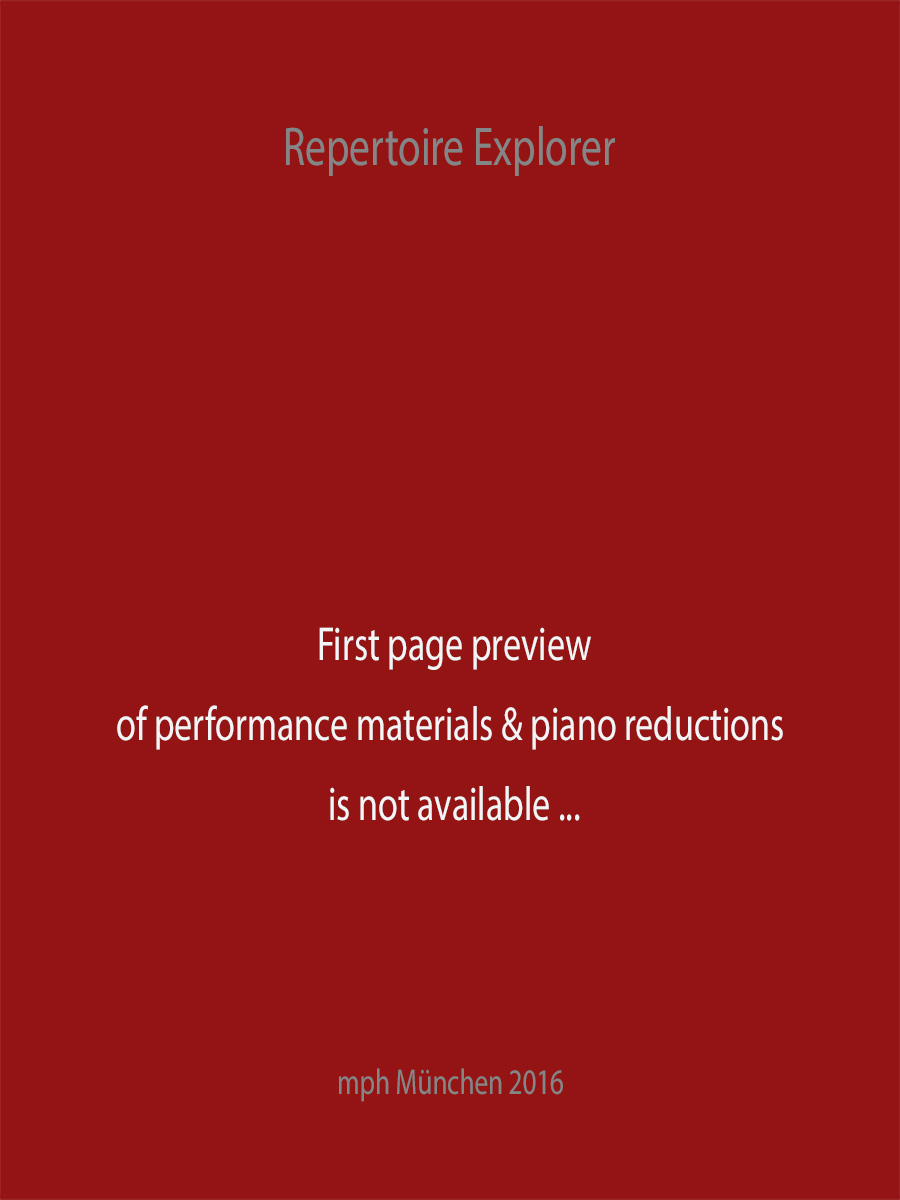Miserere (Vocal Score)
Hoffmann, E.T.A.
20,00 €
Preface
Ernst Theodor Amadeus Hoffmann
Miserere in B-flat Minor
AV 42 (1809)
(b. Königsberg, 24 January 1776 – d. Berlin, 25 June 1822)
Preface
At the dawn of the nineteenth century, E. T. A. Hoffmann—among other romantic thinkers—helped circumscribe the essence of German music romanticism, an amalgam of music, literature, poetry, and philosophical thought. In spite of a career in bureaucratic positions, Hoffmann became an eloquent champion of the early romantic move- ment through his own compositions, short stories and musical writings. His novellas and short stories explored the world of the fantastic and the uncanny, and served as inspiration for generations of artists. Schumann’s Kreisleriana paid homage to Hoffmann’s alter ego, the fictional Kapellmeister Johannes Kreisler; Offenbach’s opera The Tales of Hoffmann is based on several of his short tales; Delibes’s Coppélia and Tchaikovsky’s Nutcracker ballets owe their inspiration to some of his most imaginative stories, as does Hindemith’s opera Cardillac (1926).
Hoffmann pioneered a type of music criticism that bordered on literature. Among his influential writings for the Allgemeine musikalische Zeitung of Leipzig, the essay on Beethoven’s instrumental music (based on his famous 1810 review of the Fifth Symphony) takes center stage. In it we find the codification of music’s superiority among other arts: “Music is the most romantic of all the arts—one might almost say, the only genuinely romantic one—for its sole subject is the infinite.” It is no coincidence, then, that music occupied a central place in his life. Although Hoff- mann’s oeuvre remains largely neglected, he was a quite prolific composer of vocal and instrumental music. He is primarily known for his opera Undine (1816) and several works of chamber music.
Of his sacred compositions only three have survived: a Mass in D minor for chorus and orchestra (1803-05), 6 Canzoni for a cappella chorus (1808), and the Miserere in B-flat minor for soloists, chorus and orchestra (1809). Most importantly, however, Hoffmann’s contributions to sacred music lie in his aesthetics of sacred music, as articulated in his influential article “Old and New Church Music” (“Alte und neue Kirchenmusik”), published in 1814 in the Allgemeine musikalische Zeitung. In this essay he stipulated that composers did not write church music any longer because “[i]n the last half of the eighteenth century increasing enfeeblement and sickly sweetness finally overcame art … keeping step with so-called enlightened attitudes, which killed every deeper religious impulse.” He lamented the decline of church music after the Baroque period, and he argued that composers of his time lacked the “divine spark” and “inner glow from which in everlasting incandescence true works of art arise.” He, however, seemed to be criticizing not the lack of religious music per se, but the lack of spiritual dignity in church music of the time. He saw in Palestrina’s church music an “austere, noble style . . . the sincere and dignified expression of a spirit fired by the most ardent devotion. He concluded that “Haydn’s masses and church hymns cannot stand as models of church style, particularly compared with that truly sacred music of former times which has now vanished from the earth.” Hoffmann acknowledged only two masterpieces of genuine sacred music of “former times”: Handel’s Messiah and Mozart’s Requiem. Interestingly enough, Beethoven’s Mass in C was not included in this canon of great sacred works, although he praised it just one year before the appearance of the aforementioned article.
Read the preface to the full score / das Vorwort zur Partitur lesen > HERE
Score Data
| Score No. | 1727b |
|---|---|
| Edition | Repertoire Explorer |
| Genre | Choir/Voice & Orchestra |
| Size | 225 x 320 mm |
| Specifics | Piano Reduction & Voice |
| Printing | Reprint |
